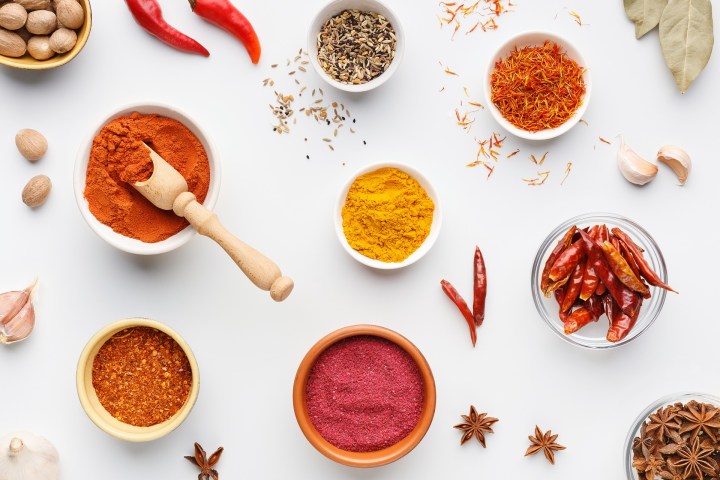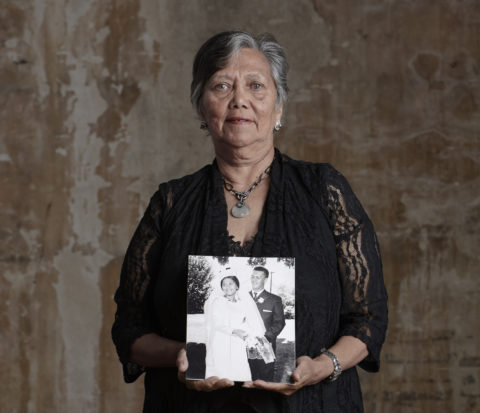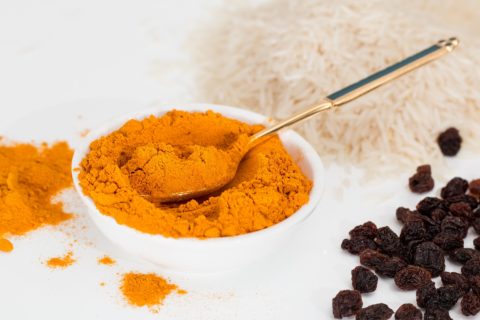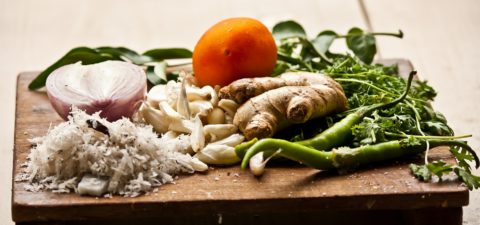HUIS KOMBUIS
Crayfish curry & Breyani: Mrs P’s home cooking

All over South Africa, women are preparing meals on a daily basis and often on a budget to feed their families. Lin Sampson talks to Jean Pretorius.
The writer supports The Hope Exchange, a group of people who provide food for the homeless in Cape Town. Please help them here
I take the M5, a road that cuts an edgy route through the urban sprawl to the thickets of Athlone with its street life; Moslem women in black abayas walk hand in hand; a muezzin calls for prayer. Men in a shop advertised as “Indian Barber” cuts rakishly through hair as shiny and black as liquorice.
Among this mass of houses and shops are women cooking for large families, making ends meet, corralling small savings, using stretchers – lang sous – to make meals that can meet the needs of a large family. They might go unheralded, but many are the supreme cooks of the Cape Peninsula.
One of these women is Mrs Pretorius, Jean, although I address her as Mrs as I was taught as a child until she gives me permission to call her by her first name. She lives in a small, heavily barred house in Crawford, not far from where she was brought up in Thornton Road, the eldest of 13 children. She now lives with her youngest son who is lying on a bed engulfed in the vapours of a humidifier to help his sinuses. There is a small dog with a bark that goes through you like glass breaking.
Mrs P is super confident.
She takes a deep breath and talks into the tape recorder as if she is on TV. “Good morning, I am Jean Pretorius and I am part of the Huis Kombuis Group of District Six. The recipes I use are old recipes. They come from our parents. I must admit that some of them are not very easy to make because they are made in the old style.”
Although her family has shrunk, her meals have not, and she spends her day planning, cooking, using skills she learnt growing up. The deliciousness of her cooking is well known in the neighbourhood and there are always extra guests at the table.
She was brought up a few streets away.
“Our house in Thornton Road had a large family kitchen with a coal stove and a paraffin stove. We lit the coal stove in the morning. As the food cooked, the whole kitchen was full of these wonderful smells of soft brown meat and potatoes. Sometimes my ma would add marrow bones. There was always soup on the go. Our favourite was split peas and stamp and stoot, beans and white mealies or stamp.
“The recipes I use are old recipes. They come from our parents but I must admit that some of them are not very easy to make. Whereas today we have things like pressure cookers and other mod cons, in the old days we took the long route.”
Talking to her on the phone, she mentions casually that she has just made a crayfish curry. Where do you get the crayfish? “Oh, that is another story. If you go to some of these fish markets, they sell in packs and they are undersized. Sometimes I just substitute with yellowtail, cut up in small cubes, or you can leave the bone in. I use the recipe from the Cape Malay Cookbook and I have found it very reliable.
What has she cooked this week?
“Today we had some left-over pickled fish, and I had some lentils and rice, and I made a little lentil breyani; my granddaughter is a vegetarian. What I find very useful are those packets of breyani mixture you find in Indian shops. I use that but I add more garlic and more ginger and when they say vinegar, I rather use tomato. I take the half green ones and braise them with onions. (See below for District Six Huis Kombuis basic breyani recipe.)
“You can follow this one for fish as well, just watch it more carefully and take it off the stove sooner.
“The wonderful thing with breyani, you can adapt it to use chicken, fish or even just vegetables. Spice with ginger (middle finger length), garlic, cardamom pods, leafed masala. It is a very good basic recipe because you can use all the things you have in the house. Lovely with kingklip or yellowtail.
“You have to be very careful with fish, if you overcook it becomes rubbery and very dry.”
Mrs Pretorius doesn’t use snoek heads. “It’s not everyone who likes snoek heads.” But it was snoek heads or any fish heads that were most in demand in the early days of District Six.
One of the biggest losses to the Cape Peninsula was the fish market in District Six on the corner of Hanover and Clifton streets, opposite the Star cinema. My pa used to take me there as a child. We lived in Claremont, but we went to District Six because we could buy on tick. We often bought something called stockfish because it was cheap. I loved the fish market with all the silvery fish scales that caught the light. There were snoek, harders, maasbankers, hottentot, red roman, but my favourite was always geelbek, yellowtail.
Jean Pretorius has found another small fish market in Ottery – the Wetton Fish Market – which she says is good. “They are very helpful and will cut a fish the way you want and are always happy to give you advice.”

Mrs Pretorius holds her wedding picture, a treasured possession. (Photo: Supplied)
Mrs P does not only stick to traditional dishes. She likes to be innovative. She says her crab stick salad recipe is “quite a winner”.
“You take a 500 g packet of crab sticks (they are not made of crab but pulverised white fish and starch) which you cut up and flake. Chop onion, garlic and celery stalks, all raw. Add crabsticks to the mixture. Lastly add cubed avocado and mayonnaise. Mix thoroughly and season with salt and fish masala.
“I’ll let you into a little secret. I sometimes add a drop or two of tomato sauce to the mayonnaise so it has a lovely pink colour. I don’t know why but my children love it. The other secret is to add chopped coriander. It is lovely alone or served with fried yellowtail or kingklip.
“I’m going to let you into another little secret. I saw this on the shelf; they call it Tikka Chicken. I asked this Moslem woman if I could use it in the oven and she said yes. It has all the ingredients.”
She reads them out: “Turmeric, cumin, jeera, onion, coriander”, taking no heed of the industrial strength chemicals that go into keeping bottled Chicken Tikka alive.
“I use it on my new chicken dish. You take your olive oil or fish oil and you add it to the paste. It is already a paste, but you want to make it a bit thinner with lemon juice. You brush the chicken pieces with the paste and you leave it overnight. The next day you wrap in foil and put in the oven. In an hour it is done, you take off the foil and leave it to crisp up. What I did was add potatoes and they came so nice it was like a roast potato because it had the yellowish colour from the turmeric in the Chicken Tikka.”
Her latest dish is hake and bacon. “This is something I saw at a restaurant, but the chef wouldn’t give me the recipe. So, I thought, I am not going to get defeated here, so I phoned my sister and her son who is a chef. I asked him if he had made it before. So, I thought I am going to try and he said he would come and test it. He said it was better than the restaurant.
“What I did was, I went to the supermarket and they had the Irving and Johnson boxes of medallions of hake, I took a 500 kg of frozen hake medallions. You can also use fresh kingklip or yellowtail. I am a person who is extremely fond of yellowtail.
“You take the medallions of hake and you roll each one in bacon – you must use back bacon – and fix with a toothpick. Put in a Pyrex dish and sprinkle with chopped onion and garlic. Bind with lemon juice and add salt and black pepper. Put in a medium hot oven. When the bacon starts sizzling the fish is done. You don’t need any oil. In summer you add your salad and in winter you have your veggies.
“I also make fish cakes. I take the recipe from the District Six Huis Kombuis book but I will let you into a secret. To bind any fish cake, use Jungle Oats instead of breadcrumbs, lovely and crunchy.”
Basic Breyani
This is Annie Balm’s Breyani recipe from the District Six Huis Kombuis book. Annie grew up in District Six and would buy spices and vegetables from the babbie shop. “I always asked for pasella,” she writes. “Sometimes they would give me a piece of fruit.”

(Image of turmeric by Steve Buissinne from Pixabay)
Ingredients
1 tsp borrie (turmeric)
1 kg chicken, mutton or fish
4 to 5 large onions, sliced
1 cup cooking oil
1 piece ginger
4 to 5 cloves garlic
2 tsp koljander (coriander)
2 tsp barishap (fennel)
2 tsp jeera (cumin)
5 cardamom pods
1 stick cardamon
2 heaped tsp leafed masala
Salt to taste
1 cup cooked lentils
6 boiled eggs, halved
Butter
Method
Soak rice in boiling water with borrie. Boil for a short while – rice must not be too soft. Strain and set aside. Braise meat/chicken/fish with onions and spice ingredients. Add water little by little, not too much. Layer rice, meat/chicken/fish and lentils.
Pack 6 egg halves on top of mixture. Repeat layers, ending with rice. Cover pot and simmer on slow heat for an hour. Try not to stir. Add a few pats of butter on top.
Fish smoortjies
These are Ruth Jeftha’s fish smoortjies from the book District Six Huis Kombuis. “Growing up in District Six was not easy. I was the third eldest of a family of 11 children. We always had to make the pot stretch so all could eat. Tinned fish was affordable and we could use it to make various dishes – like adding tomatoes and onions or a curry spice to flavour it. We enjoyed it for supper or used on sandwiches for school lunches.”
Ingredients
A little fish oil to cover base of saucepan
1 large onion
1 large tomato
1 large green pepper
1 small chilli
1 tin pilchards or Lucky Star fish
Method
Heat fish oil and add chopped vegetables and a spoonful of sugar. Braise all together until caramelised. Add the tin of fish and simmer over low heat.
“We usually added grated carrots, diced potatoes or macaroni to make the meal stretch.” DM/TGIFood






 Become an Insider
Become an Insider
This article and last weeks article on the fishmonger gave me great joy. Hard working people brought to life with such lovely prose